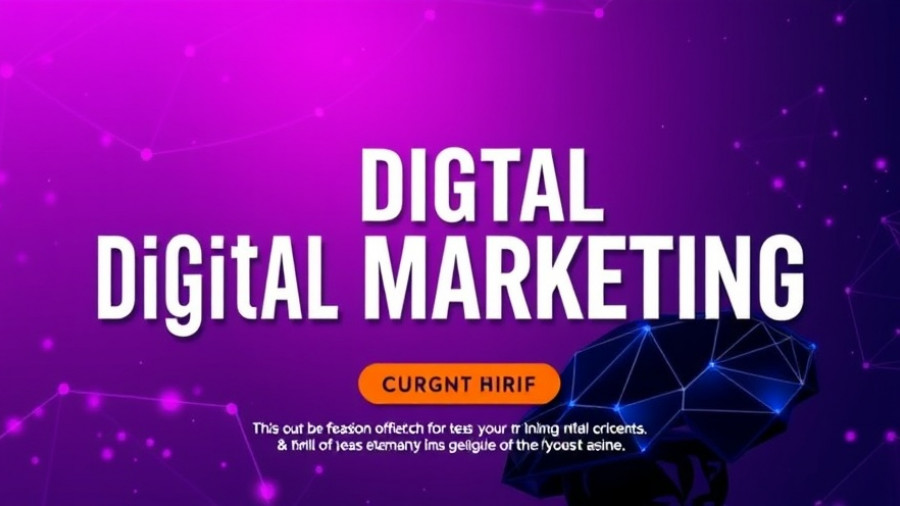
Understanding AI Engine Visibility: A New Frontier
In today's fast-paced digital landscape, AI engine visibility is becoming critical for marketers and business owners. As artificial intelligence transforms how content is discovered, the strategies we employ must evolve. Traditional SEO is not sufficient anymore; we must adapt to AI visibility optimization (AIVO) to ensure our content reaches the intended audience effectively.
The Evolution from SEO to AIVO
Just as the dot-com bubble ushered in a need for search engine optimization, the rise of AI requires a paradigm shift toward AI visibility optimization. Unlike classic SEO, which focuses on ranking high in search engine results, AIVO is about ensuring that your content is integrated within AI-driven platforms. It’s like transitioning from being a loud voice in a crowded room to being a trusted source that AI selects for recommendations.
Key Strategies for Leveraging AI in Digital Marketing
1. **Utilize Natural Language Processing (NLP):** NLP helps in understanding user intent. Optimizing content through NLP ensures that your messages resonate with both human audiences and AI bots, enhancing engagement and improving visibility.
2. **Target High-Value Keywords and Trends:** AI tools can analyze massive datasets to identify lucrative keywords and search trends. This data-guided approach allows marketers to refine their strategies, creating content that is tailored to audience needs.
3. **Create Predictive Analytics Campaigns:** Employ predictive analytics to understand future search behaviors. By analyzing past data, businesses can anticipate user inquiries and shape their content strategy accordingly, positioning themselves as industry leaders.
The Importance of Content Relevance in the Age of AI
With AI engines acting as gatekeepers, the relevance of your content is paramount. Draw on the insights from industry experts like those from Forbes Agency Council, who highlight how AI empowers SEO through improving content structures and analyzing search intent. Marketers must focus not just on creating content but on developing narratives that resonate with AI systems.
Challenges of AI Visibility Optimization
Despite the many advantages, AIVO presents unique challenges. Currently, there are no mature analytics tools available to effectively measure the success of AI visibility efforts, making it essential for companies to invest in skills and practices that will help them understand AI’s inner workings.
Practical Tips for Enhancing AI Visibility
Implementing AIVO techniques involves several steps:
- **Conduct Regular SEO Audits:** Utilize AI tools to identify technical issues on your website that could hinder visibility.
- **Embrace Content Diversity:** Incorporate a variety of formats (like video and podcasts) to create multifaceted engagement opportunities.
- **Stay Informed:** Keep up with the latest trends in AI and digital marketing to evolve your strategies continuously.
Engaging Audience with Personalized Experiences
Content must not only be informative but also engaging. This is where marketing automation and personalization come into play. Creating tailored experiences based on user behavior can significantly enhance conversion rates and improve customer satisfaction.
Conclusion: The Future Belongs to Those Who Adapt
As we delve into the era of AI, organizations that embrace AI visibility optimization will have a distinct advantage. The digital marketing landscape is changing fast, and only those willing to adapt their strategies will thrive. Start using these tools and insights now, and position your company for success in this new reality.
 Add Row
Add Row  Add
Add 




Write A Comment